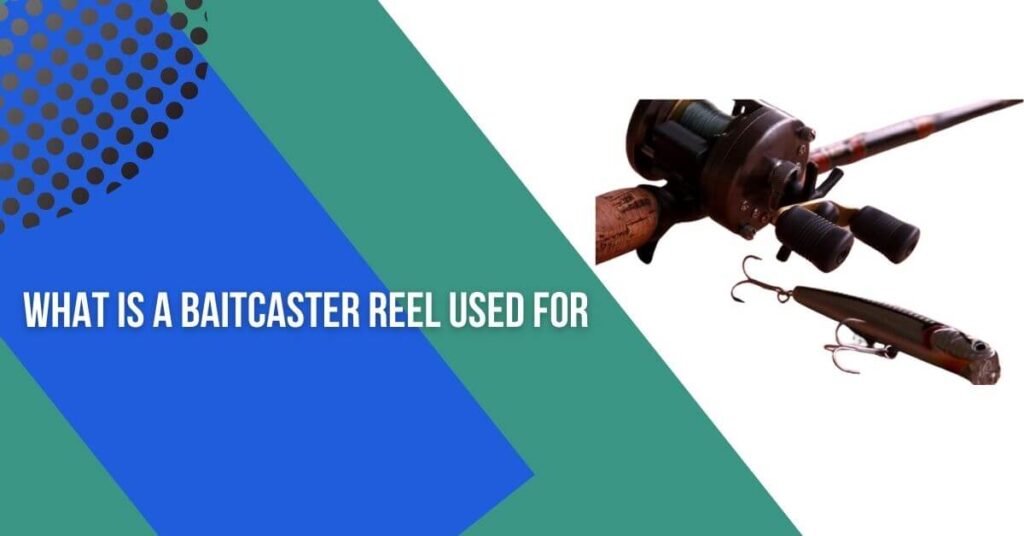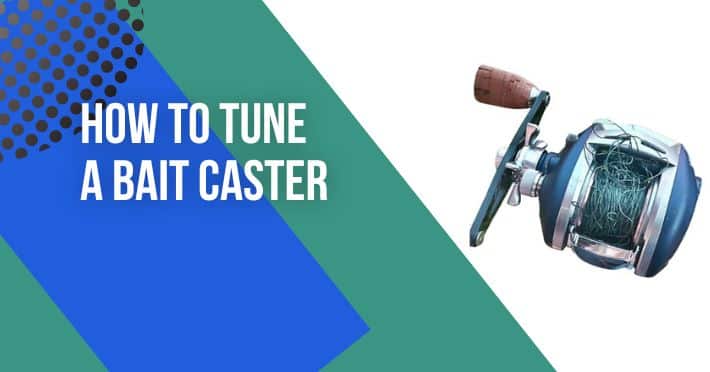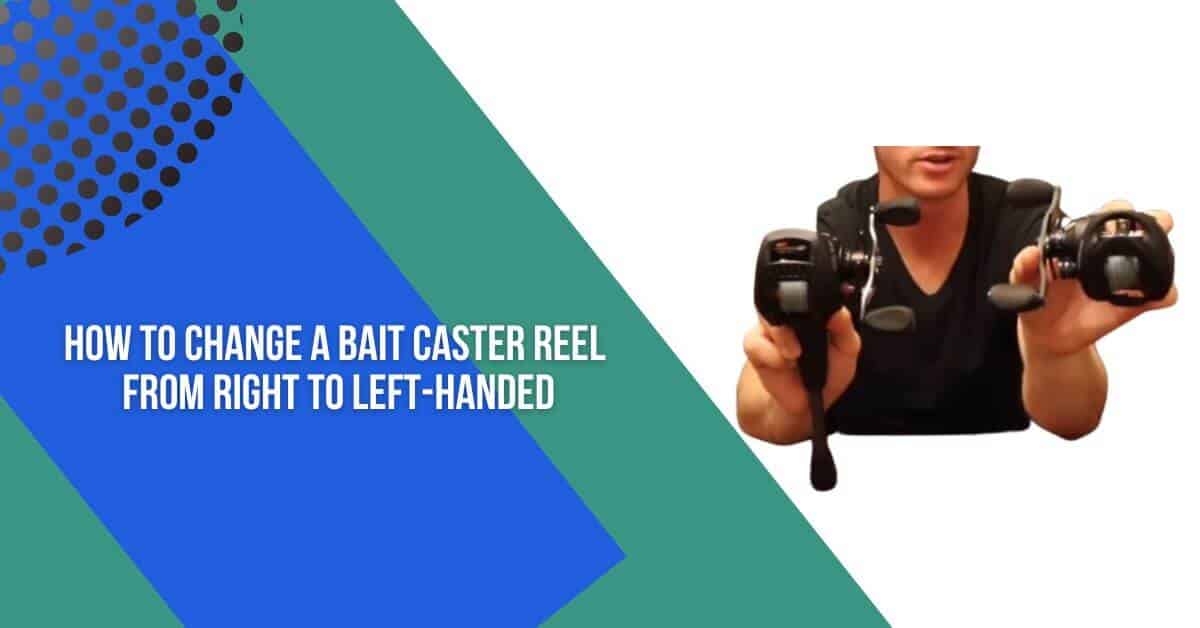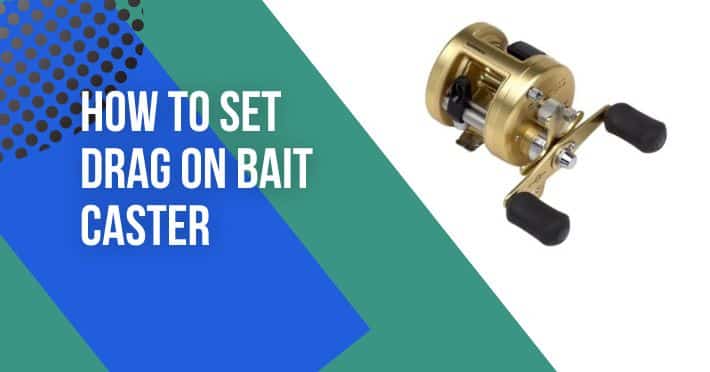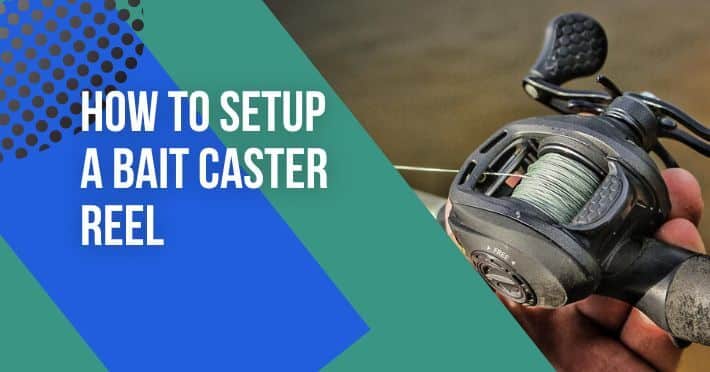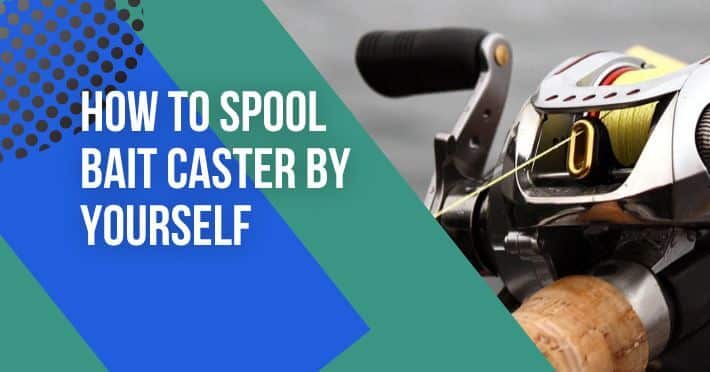Contents
- 1 What Is A Baitcaster Reel Used For
- 2 Design and Mechanism & Overview of the Components of a Baitcaster Reel
- 3 Spool
- 4 Handle
- 5 Brake System
- 6 Drag System
- 7 Gear System
- 8 Frame and Body
- 9 How it Works
- 10 Comparison With Other Reel Types
- 11 Advantages of Baitcaster Reels
- 12 How to Use a Baitcaster Reel
- 13 Proper Setup
- 14 Proper Maintenance
- 15 Techniques for Casting and Retrieving
- 16 Tips for Avoiding Backlashes and Other Common Problems
- 17 Factors to Consider When Selecting a Baitcaster Reel
- 18 Gear Ratio
- 19 Ball Bearings
- 20 Line Capacity
- 21 Drag System
- 22 Braking System
- 23 Frame and Body
- 24 Handle
- 25 Price
- 26 Conclusion
- 27 Frequently Asked Questions
- 28 What kind of fishing is a baitcaster reel best for?
- 29 Can you use a baitcaster reel for saltwater fishing?
- 30 How do I prevent backlashes when using a baitcaster reel?
- 31 Can I use a baitcaster reel as a beginner?
- 32 How do I choose the right baitcaster reel?
A baitcaster reel is a type of fishing reel that is commonly used by experienced anglers for targeting bigger fish species in both fresh and saltwater environments. In this guide, we will Comprehend What is a baitcaster reel is used for, which is critical for various grounds, particularly if you appreciate fishing. Unlike spinning reels, which feature a spool that rotates around a fixed axis, baitcasting reels have a revolving spool that rotates perpendicular to the rod axis.
This design allows for greater casting accuracy and distance, as well as better control over the lure or bait being used. Baitcasting reels are popular among anglers who prefer the versatility and sensitivity they provide, as well as the ability to handle heavier lines and lures. In this article, we will explore the features and benefits of baitcasting reels, as well as some tips on how to use them effectively.
What Is A Baitcaster Reel Used For
Understanding what a baitcaster reel is used for is important for several reasons, especially if you enjoy fishing. Here are a few reasons why:
- Control and Accuracy: Baitcasters offer greater control and accuracy than other types of fishing reels, such as spinning reels. With a baitcaster, you can cast your bait exactly where you want it to go, which is especially important when fishing in areas with a lot of covers or when targeting specific species.
- Ability to Catch Larger Fish: Baitcasters are designed to handle heavier fishing lines, making them ideal for catching large fish. They also provide greater power and torque, which is important when reeling in a big fish.
- Versatility: Baitcasters can be used for a variety of fishing techniques, including flipping, pitching, and casting. This versatility makes them a valuable tool for any angler.
- Fishing Efficiency: Once you become comfortable with using a baitcaster, you can increase your fishing efficiency by making quicker and more accurate casts. This means you’ll spend less time untangling your line and more time actually fishing.
Overall, understanding how to use a baitcaster is an important skill for any angler to have. With practice and experience, you’ll be able to take advantage of the many benefits that a baitcaster can offer.
Design and Mechanism & Overview of the Components of a Baitcaster Reel
A baitcasting reel is a type of fishing reel that is commonly used by anglers for catching large fish species. It consists of several components that work together to cast and retrieve the fishing line. The main components of a baitcasting reel include:
Spool
This is the cylindrical component that holds the fishing line. It rotates around the reel’s axis and is responsible for casting and retrieving the line.
Handle
This is part of the reel that the angler turns to wind the line onto the spool.
Brake System
This is a feature of the reel that helps control the speed of the spool during casting. It can be adjusted to help prevent backlashes and ensure accurate casting.
Drag System
This is a mechanism that allows the angler to adjust the amount of resistance on the fishing line. It helps to tire out the fish during the fight and prevent the line from breaking.
Gear System
This is a set of gears that transmit power from the handle to the spool. It helps to reel in the fishing line quickly and efficiently.
Frame and Body
These are the main components of the reel that hold all the other parts together.
How it Works
When an angler casts with a baitcasting reel, they hold the rod with one hand and press down on the spool release button with the other hand. This releases the spool, allowing the fishing line to flow freely. As the angler casts, they use their thumb to control the speed of the spool, slowing it down or stopping it completely to prevent backlash.
Once the bait has landed in the water, the angler turns the handle to wind the fishing line back onto the spool. The drag system helps to tire out the fish during the fight, while the gear system allows the angler to reel in the line quickly and efficiently.
Comparison With Other Reel Types
Baitcasting reels are often compared to spinning reels, which are another popular type of fishing reel. Spinning reels are easier to use for beginners because they do not require the same level of precision as baitcasting reels. They are also better for casting light lures and fishing in windy conditions.
However, baitcasting reels are better for catching larger fish species and for making accurate casts over longer distances. They also offer more control over the speed of the fishing line, making them a favorite among experienced anglers.
Advantages of Baitcaster Reels
- Improved accuracy and casting distance
- Better control and sensitivity
- Ability to handle heavier lines and lures
- Suitable for various fishing techniques
How to Use a Baitcaster Reel
Using a baitcasting reel can be intimidating for beginners, but with proper setup, maintenance, and technique, it can be a valuable tool for catching large fish species. Here are some tips for using a baitcasting reel:
By following these tips, you can effectively use a baitcasting reel for catching large fish species while avoiding common problems like backlashes.
Proper Setup
a. Choose the Right Line: The type of fishing line you use is crucial when it comes to baitcasting. Choose a line that is suitable for the fish you are targeting and matches the recommended line capacity of your reel.
b. Adjust the Brake System: Before casting, adjust the brake system to match the weight of your lure and the conditions you are fishing in. This will help prevent backlashes.
c. Set the Drag: Adjust the drag to ensure that it is not too tight or too loose. The drag should be tight enough to tire out the fish during the fight, but loose enough to prevent the line from breaking.
Proper Maintenance
a. Clean and Oil the Reel Regularly: Baitcasting reels require regular maintenance to keep them functioning properly. Clean and oil the reel after each use to prevent corrosion and prolong its lifespan.
b. Check the Line for Knots and Tangles: Before each use, check the fishing line for knots and tangles that could cause backlashes or other problems.
Techniques for Casting and Retrieving
a. Thumb Control: Use your thumb to control the speed of the spool during casting. Slow down or stop the spool to prevent backlashes and ensure accurate casting.
b. Smooth Casting Motion: Make a smooth and controlled casting motion to prevent the lure from flying off course or tangling the line.
c. Retrieve with a Steady Rhythm: Retrieve the fishing line with a steady rhythm, using the handle to reel in the line and your thumb to control the spool speed.
Tips for Avoiding Backlashes and Other Common Problems
A. Practice in An Open Area: Before fishing, practice casting in an open area to get a feel for the reel and its brake system.
B. Avoid Casting into the Wind: Baitcasting reels are not as effective in windy conditions, so avoid casting into the wind if possible.
C. Use Heavier Lures: Heavier lures are easier to cast with a baitcasting reel and are less likely to cause backlashes.
D. Keep the Spool Tension Consistent: Consistent spool tension is crucial for preventing backlashes. Keep the tension consistent throughout the cast and retrieval process.
E. Start with Shorter Casts: Start with shorter casts until you get the hang of the reel, then gradually increase the distance of your casts.
Factors to Consider When Selecting a Baitcaster Reel
When selecting a baitcasting reel, there are several factors to consider to ensure that you choose the right reel for your needs. Here are some of the most important factors to consider:
Gear Ratio
The gear ratio of a baitcasting reel determines the speed at which you can retrieve the fishing line. A higher gear ratio means that you can retrieve the line more quickly. Consider the type of fishing you will be doing and choose a gear ratio that is suitable for your needs.
Ball Bearings
The number and quality of ball bearings in a baitcasting reel affect its smoothness and durability. More ball bearings generally mean a smoother reel, but higher quality bearings are more important than the number of bearings.
Line Capacity
Consider the type and weight of the fishing line you will be using and choose a reel with a suitable line capacity. Ensure that the reel can hold enough lines to handle the size of the fish you are targeting.
Drag System
The drag system of a baitcasting reel helps to tire out the fish during the fight and prevent the line from breaking.
Braking System
The braking system of a baitcasting reel helps to prevent backlashes and ensure accurate casting. Look for a reel with a reliable and adjustable braking system that can match the weight of your lure and the conditions you are fishing in.
Frame and Body
The frame and body of a baitcasting reel affect its durability and weight. Look for a reel with a strong and lightweight frame and body that can handle the conditions you will be fishing in.
Handle
The handle of a baitcasting reel affects its ergonomics and ease of use. Look for a reel with a comfortable and easy-to-grip handle that suits your personal preference.
Price
Baitcasting reels come in a range of prices, so consider your budget when selecting a reel. Remember that higher-priced reels often have more features and higher-quality components, but you can still find a quality reel at a lower price point.
By considering these factors when selecting a baitcasting reel, you can choose a reel that suits your needs and helps you catch the fish you are targeting.
Conclusion
Overall, baitcasting reels are an excellent option for experienced anglers who want to improve their accuracy and control during fishing. In this compass, we learn what a baitcaster reel is used for, which is required for miscellaneous settings, notably if you relish fishing.
While they may take some practice to master, they offer many advantages over other reel types, including greater casting accuracy and control, more powerful retrieval, and the ability to handle larger fish species. If you’re looking to take your fishing to the next level, a baitcasting reel may be a great investment.
Frequently Asked Questions
What kind of fishing is a baitcaster reel best for?
Baitcaster reels are best suited for freshwater fishing and are commonly used for techniques such as flipping, pitching, and casting heavy lures or baits in freshwater.
Can you use a baitcaster reel for saltwater fishing?
Yes, you can use a baitcaster reel for saltwater fishing, but you need to make sure that it is designed for the harsh saltwater environment and has appropriate corrosion-resistant materials.
How do I prevent backlashes when using a baitcaster reel?
To prevent backlashes, make sure that your reel is set up correctly and use proper casting techniques. You should also adjust the braking system and spool tension according to the weight of the lure and the wind conditions.
Can I use a baitcaster reel as a beginner?
Yes, beginners can use a baitcaster reel with proper instruction and practice. It may take some time to master the casting technique and prevent backlashes, but with patience and practice, you can learn to use a baitcaster reel effectively.
How do I choose the right baitcaster reel?
Consider factors such as the gear ratio, ball bearings, line capacity, drag system, braking system, frame and body, handle, and price when choosing a baitcaster reel. The right reel will depend on your fishing needs and personal preferences.

